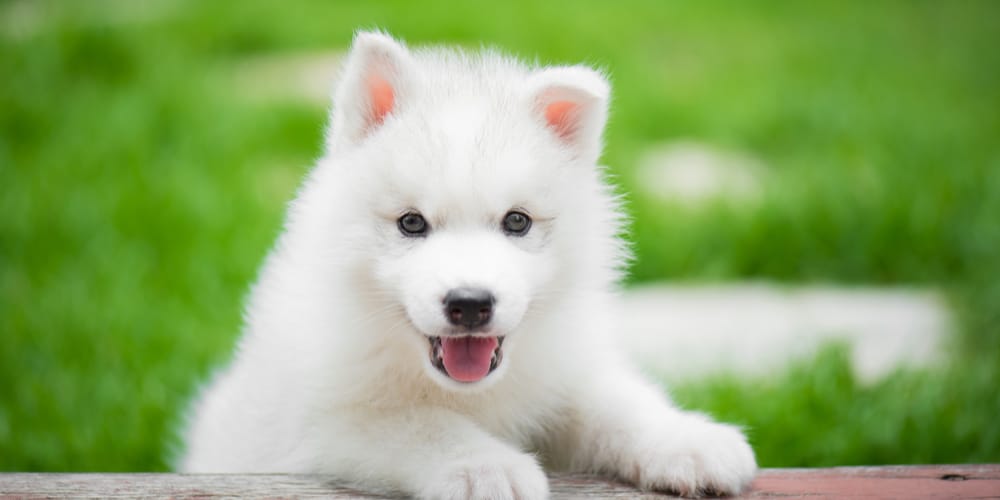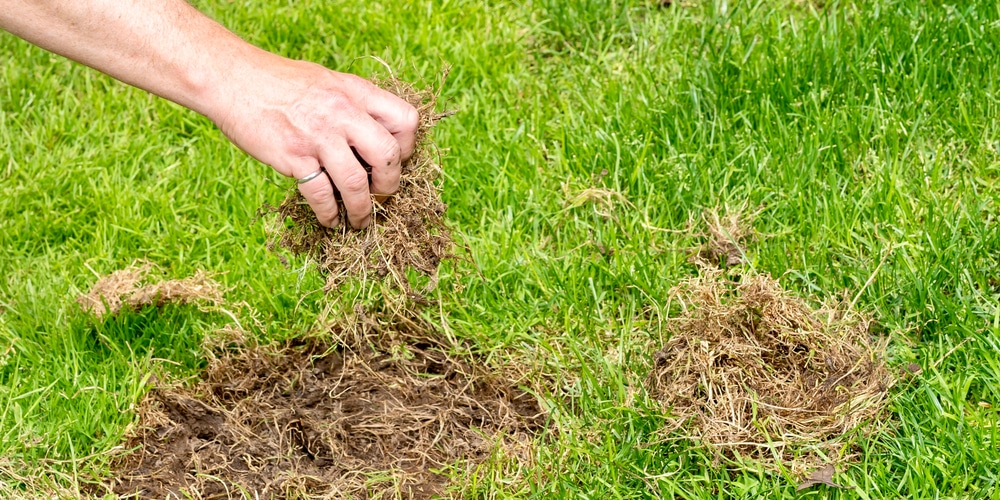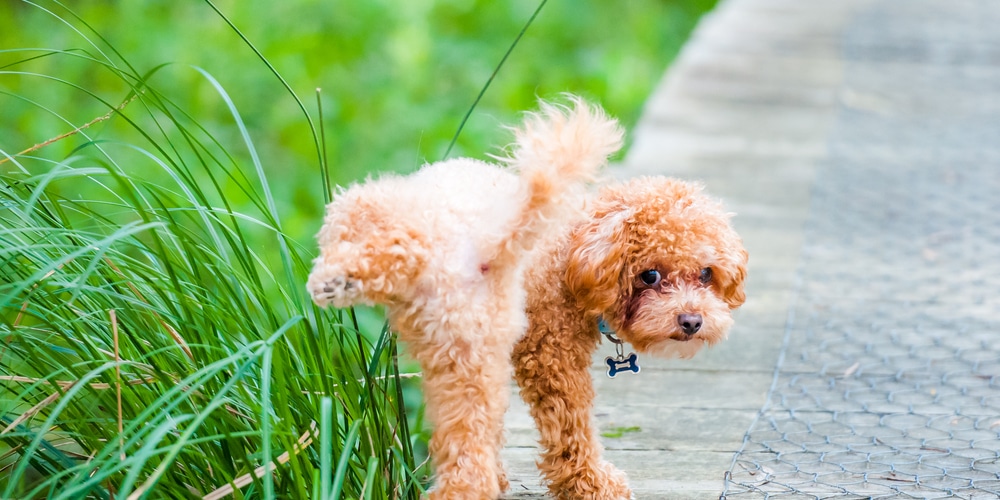It’s a warm summer evening, and the sun is just starting to set. You’re in your backyard, surrounded by the flowers you’ve carefully planted and nurtured over the past few months.
But suddenly, your idyllic scene is interrupted by the sound of dogs barking. As you look up, you see your neighbor’s dogs running through your yard, trampling your flowers and leaving behind a trail of destruction. Worse – it could be your own dogs that are doing the damage.
Every dog owner knows that a dog can wreak havoc on a yard – whether it’s digging up the flowers, tearing up the grass, or just running around and trampling everything in sight.
At one point, before they get proper training, there’s always a chance that your dog (or dogs) will turn your yard into their own personal playground – and not in a good way. But is there hope for a yard that’s been destroyed by dogs?
Common Yard Damage Caused by Dogs and How to Fix Them
Despite those wet kisses and wagging tails, dogs can be mischievous. Therefore, it’s important to be aware of how dogs can damage your yard so you can take steps to prevent it – or at least mitigate the damage. In this article, we’ll focus on the top 3 problems pet parents experience in terms of yard damage caused by dogs.
Endless Digging
Dogs like to dig by nature – and this poses a significant amount of damage to your yard. Whether they’re trying to bury a bone or just get to the other side of the fence, dogs can quickly create large holes in your yard. If you have a dog that loves to dig, you can do a few things to mitigate the damage.
First, ensure your dog has plenty of toys and bones to keep them entertained – this will help reduce their urge to dig. Second, create a designated digging area in your yard. This will give your dog a place to dig without damaging the rest of your yard. It could be a sandpit or a section of the yard that’s fenced off.
As for the holes that your furry friend has already created, here’s how you can fix this damage:
- Fill in the dirt that your dog has dug up. You can use a shovel or a rake to do this.
- Water the soil. This way, the dirt you just added settles, and top it off whenever necessary.
- Add your grass seed. Scatter it thoroughly. The amount of seed you add may significantly vary depending on how large the area is. Water the area as directed in your seed package.
- Once more, fill the hole with dirt – but leave some room for your sod.
- Once ready, you can then cover the hole with sod.
- If your sod is bigger than the hole, cut it accordingly. If it’s smaller, you can patch it up with some leftover sod or dirt.
- Tamp down the sod so it can make solid contact with the ground.
- Water the area.
Rough Patches on the Lawn
Another common issue pet parents experience is finding rough patches on their lawn. This happens when your dog runs around a lot or lies down in one spot – and it can quickly kill the grass in that area. If you have a big dog, this problem can be compounded. But don’t worry, there’s a solution.
The first thing you need to do is figure out the size of the affected area. Once you’ve done that, follow these steps:
- Remove the dead grass. You can use a rake or a shovel for this. Be sure to get rid of all the roots as well.
- Expand the hole. Make it about two to three times the size of the affected area.
- Fill the hole with topsoil. You can use a garden tiller for this, but make sure the soil isn’t too compacted.
- Water the area.
- Sow your grass seed. Be generous with how much you add – you want to make sure there’s enough to fill in the area.
- Water the area.
- As the grass starts to grow, be sure to mow it regularly.
Dog Urine Spots
Dogs tend to mark their territory by urinating on objects – including trees, bushes, lawn, and yes, even your flowers. The problem with dog urine is that it’s highly acidic.
If you have a female dog, chances are you’ve dealt with this issue before – and you know how frustrating it can be. Although male dogs tend to lift their legs higher, they can still cause damage to your yard.
Affected areas may turn yellow or brown and look dry and dead. In some cases, the leaves may even curl up.
What should you do, then?
First and foremost, train your dog to go in a specific area of your yard. You can do this by walking them to the spot and rewarding them whenever they go. This may be difficult for the first few days or weeks, but with patience and consistency, your dog will learn.
Second, if you catch your dog in the act, quickly take them to their designated potty spot. Again, be sure to praise them when they go.
Third, if your dog has already urinated on your flowers or plants, immediately rinse the area with water. This will help dilute the acidity of the urine.
The next few parts will help fix the permanent damage that’s been done.
- If the leaves of your plants are yellow or brown, trim them off. Be sure to dispose of them properly – you don’t want to put them back in your garden.
- Remove the urine smell by adding coffee grounds or Epsom salt to the affected area.
- Once a week, flush the area with water. This will help remove any remaining salts. Take note; however, that salt can harm plants, so be sure to rinse the area well.
- Fertilize the affected area. This will help your plants recover from the damage done by the dog’s urine.
- Depending on the plant, you may need to replace the soil. If it’s severely damaged, it’s best to start from scratch. Not only will this help get rid of the traces of urine, but it will also give your plant a chance to grow back stronger.
- After replanting, water the area well.
How to Fix a Yard Destroyed by Dogs: Final Thoughts
As a pet parent, you love your furry friend – but you probably don’t love the damage they’ve done to your yard. Whether it’s digging holes, rough patches from lying down, or urine spots on your flowers, there are ways to fix the issue.
Dog training probably won’t happen overnight, but with patience and consistency, you can teach your dog where to go. For urine spots, be sure to flush the area with water immediately. You may also need to replace the soil or add fertilizer, depending on the severity of the damage.
For larger dogs, while you can’t stop them from running around, you can try to create a designated area for them to play. This will help minimize the amount of damage they do. Maintain and resod the area regularly to ensure that your yard always looks its best.
With a little bit of effort, you can have a beautiful yard – even with a dog.


